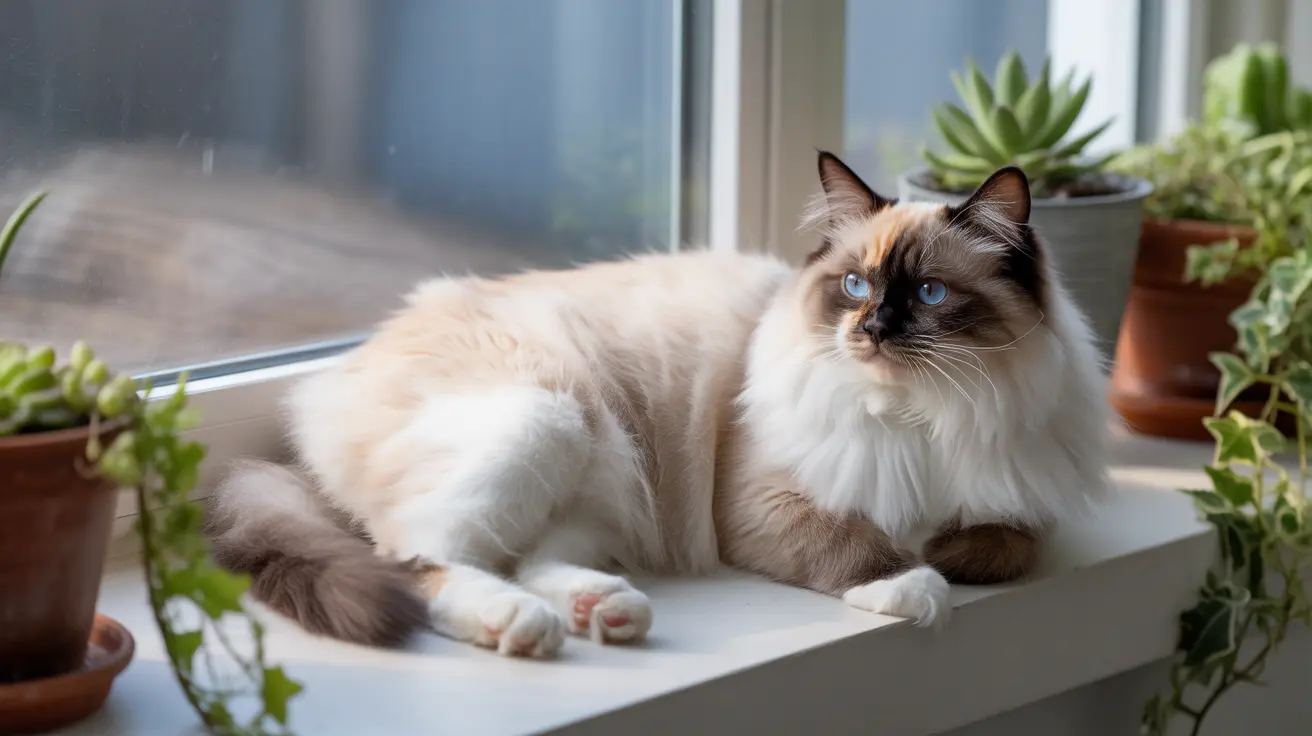For cat lovers fascinated by both the regal Ragdoll breed and the striking calico pattern, a common question arises: can Ragdoll cats display the distinctive tricolor coat that characterizes calico cats? The answer involves a fascinating intersection of genetics, breed standards, and feline biology.
This comprehensive guide will explore the possibilities and limitations of calico coloring in Ragdoll cats, helping you understand why these combinations are so rare and what actually determines a cat's coat pattern.
The Genetics Behind Calico Patterns
The calico pattern requires a specific combination of genetic factors to appear. Most importantly, it needs:
- Two X chromosomes (making most calico cats female)
- The orange color gene
- The white spotting gene
- Genes for black or other base colors
These genetic requirements explain why calico patterns are relatively rare and why they appear more commonly in some cat breeds than others.
Ragdoll Breed Characteristics and Color Patterns
Ragdolls are known for their distinctive features, including:
- Blue eyes
- Color point patterns
- Semi-long, silky fur
- Large, muscular builds
- Gentle temperaments
Traditional Ragdoll colors include seal, blue, chocolate, lilac, red (flame), and cream, typically appearing in point, mitted, or bicolor patterns.
Can Ragdolls Actually Be Calico?
While technically possible, true calico Ragdolls are extremely rare in purebred lines. This is because:
- The traditional Ragdoll breeding program focused on specific color patterns
- The genes necessary for calico coloring are not commonly found in purebred Ragdoll lines
- Breed standards typically don't recognize calico as an official Ragdoll pattern
Understanding Tortie vs. Calico Ragdolls
It's important to distinguish between tortoiseshell (tortie) and calico patterns in Ragdolls:
- Tortie Ragdolls show a mix of two colors in their points
- Calico patterns require significant white patches along with orange and black
- Many "calico Ragdolls" are actually tortie points with some white spotting
The Rarity Factor
Finding a true calico Ragdoll is exceptionally rare because:
- The required genetic combination is uncommon in purebred lines
- Most alleged calico Ragdolls are actually mixed breeds
- Breeding specifically for calico patterns isn't typically pursued by registered breeders
Frequently Asked Questions
Can Ragdoll cats naturally have a calico (tricolor) coat pattern?
Yes, Ragdoll cats can technically display calico patterns, but it's extremely rare in purebred lines and typically occurs only through mixed breeding or specific genetic combinations.
Why are male calico Ragdoll cats so rare and what genetic conditions cause this?
Male calico cats of any breed are extremely rare because the calico pattern requires two X chromosomes. Male calicos usually have a genetic abnormality called Klinefelter syndrome (XXY), which typically renders them sterile.
How does the calico pattern in cats relate to Ragdoll breed standards and genetics?
The calico pattern isn't officially recognized in Ragdoll breed standards. While the genetics for calico coloring can exist in Ragdolls, it's not a traditional or sought-after pattern in the breed.
What is the difference between a tortie Ragdoll and a true calico Ragdoll cat?
Tortie Ragdolls have two colors (usually orange and black) mixed in their point areas, while true calico Ragdolls would need to have distinct patches of white, orange, and black throughout their coat.
Are calico-patterned Ragdoll cats recognized by official cat registries and breeders?
No, calico patterns are not officially recognized for Ragdolls by major cat registries like CFA or TICA. Most reputable breeders focus on traditional Ragdoll patterns and colors.
Understanding the relationship between Ragdoll cats and calico patterns helps explain why these beautiful combinations are so rare and special. While pure calico Ragdolls may be uncommon, the variety of officially recognized Ragdoll colors and patterns offers plenty of stunning options for cat enthusiasts.






